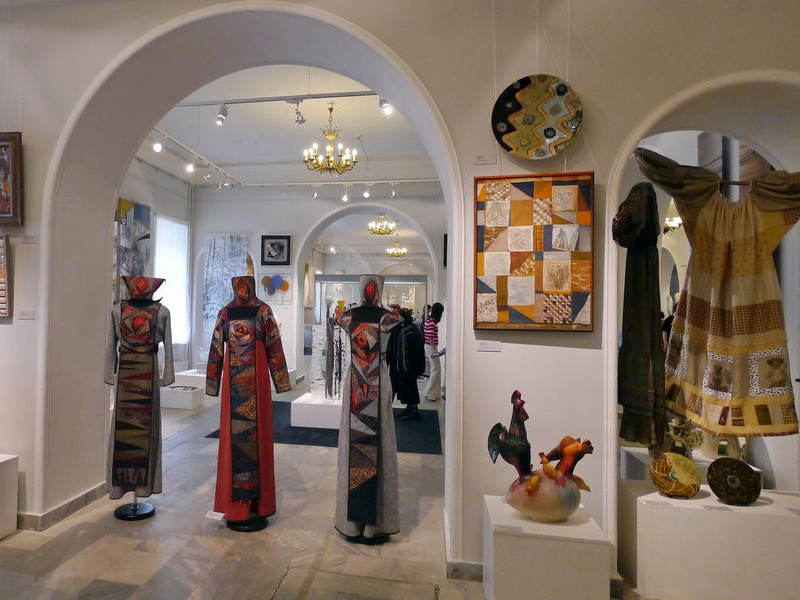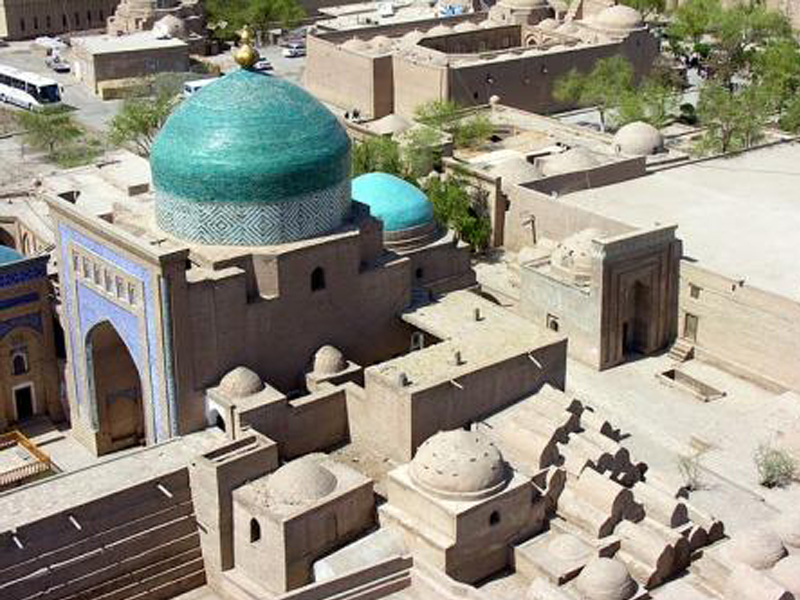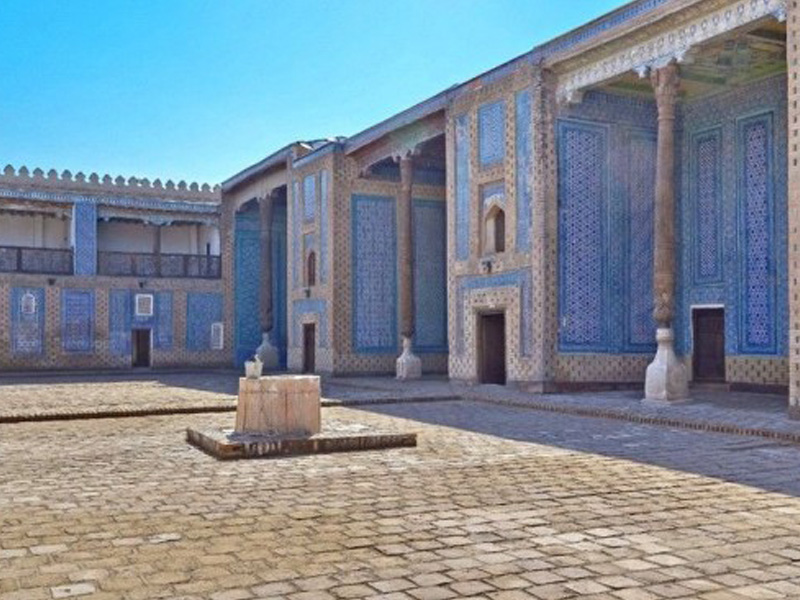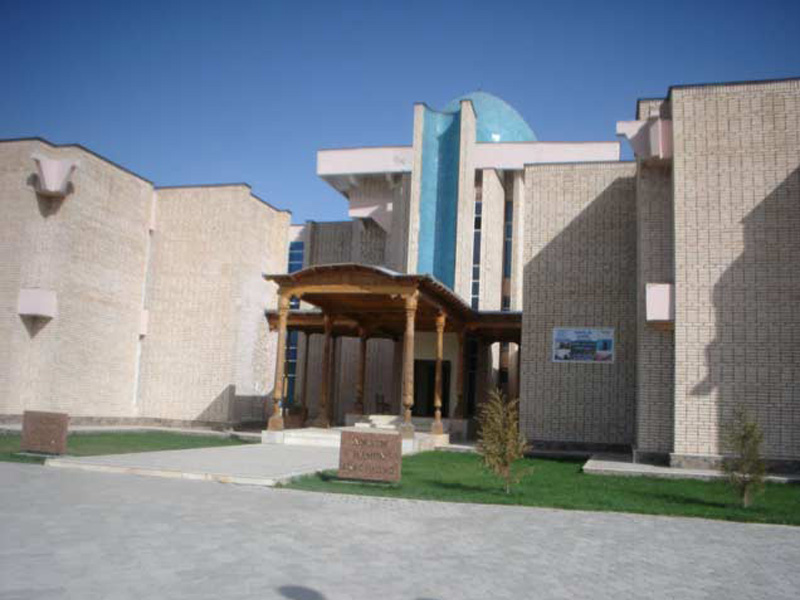


 Museum of Applied Art and Household of Khorezm is inside a madrassah Kazi-Kalyan and includes works of XVIII-XIX centuries and in some samples of XX century. Khiva guests can see here the products of folk artists who have created wonderful examples of jewellery, carpet weaving, pottery, wood carving and stone, and copper coinage. Collection of women's jewellery attracts by a variety of techniques, typical of Khorezm.
|
 The main cult centre of Ichan-Kala is Memorial of Pakhlavan Mahmud has emerged at the tomb of the patron saint of Khiva, poet and philosopher, professional wrestler and master fellmonger Pakhlavan Mahmud (1247-1326). He was revered not only in Khiva, but also in Iran, India, as a patron of fighters and poets, a healer of diseases. According to legend, the poet was buried in his workshop.
|
 During the reign of Alla Kuli Khan (1825-1842) the centre of the state, public and commercial life of Khiva moved to the eastern part of Ichan-Qala. Here near the Palvan-Darwaza gates a new set of buildings connected with the name of Alla Kuli Khan was built: new Khan's palace, madrassah, a caravanserai and a dome shopping centre.
|
 Central Asian region has made a significant contribution to the development of human civilization. In medieval times, there were many scientists and scientific schools in Central Asia, and Khorezm's Mamun Academy serves as a vivid example.
|